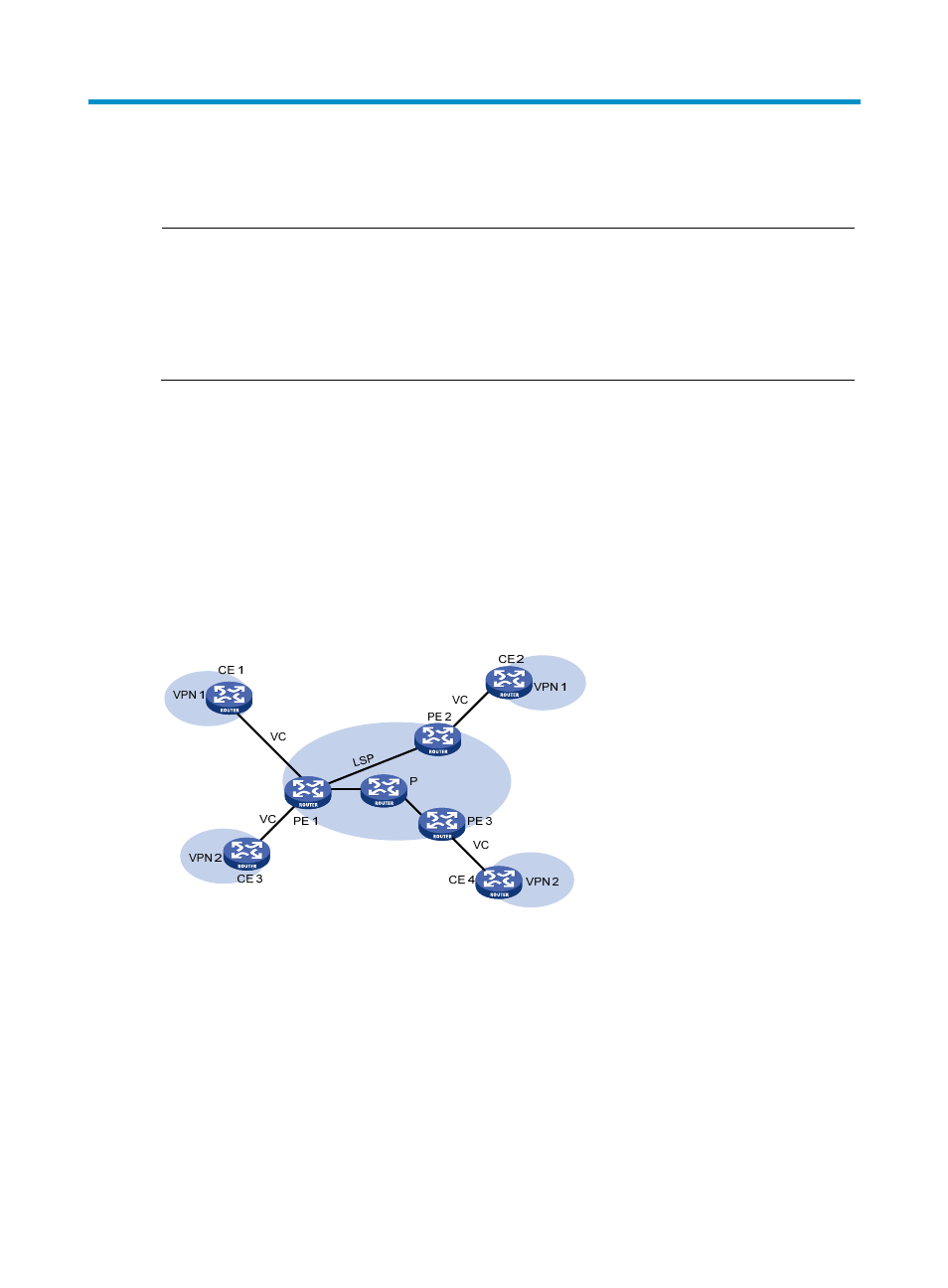Configuring mpls l2vpn, Mpls l2vpn overview, Comparison with mpls l3vpn – H3C Technologies H3C SR8800 User Manual
Page 200

189
Configuring MPLS L2VPN
NOTE:
•
In this documentation, SPC cards refer to the cards prefixed with SPC, for example, SPC-GT48L, and SPE
cards refer to the cards prefixed with SPE, for example, SPE-1020-E-II.
•
SPC cards do not support CCC, SVC, or Kompella MPLS L2VPNs.
•
SPC cards only support binding a Layer 2 Ethernet port with an L2VPN. They do not support binding a
Layer 3 Ethernet interface with an L2VPN.
MPLS L2VPN overview
MPLS L2VPN provides Layer 2 VPN services on the MPLS network. It allows carriers to establish L2VPNs
on different data link layer protocols, including ATM, VLAN, Ethernet and PPP.
MPLS L2VPN transfers Layer 2 user data transparently on the MPLS network. For users, the MPLS network
is a Layer 2 switched network and they can establish Layer 2 connections over the network.
Consider ATM as an example. Each customer edge (CE) device can connect to the MPLS network through
an ATM virtual circuit (VC) to communicate with another CE. This is similar to that of an ATM network.
Figure 47 Network diagram for MPLS L2VPN
Comparison with MPLS L3VPN
Compared with MPLS L3VPN, MPLS L2VPN has the following advantages:
•
High scalability. MPLS L2VPN establishes only Layer 2 connections. It does not involve the routing
information of users. This greatly reduces the load of the PEs and even the load of the whole service
provider network, enabling carriers to support more VPNs and to service more users.
•
Guaranteed reliability and private routing information security. As no routing information of users
is involved, MPLS L2VPN neither tries to obtain nor processes the routing information of users,
guaranteeing the security of the user VPN routing information.
•
Support for multiple network layer protocols, such as IP, IPX, and SNA.